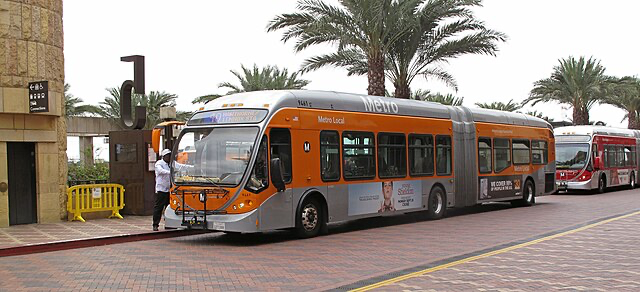No one wants to get stuck in traffic, especially Angelinos, a term for people from Los Angeles (LA). Despite being outranked by the District of Columbia as the U.S. city with the worst traffic, LA still averages about eight hours of traffic per day, creating a huge congestion problem in the metropolis. One way to mitigate this horrible traffic problem is by investing in the LA Metro public transportation system. However, improving public transportation in LA will not reduce traffic congestion unless the stigma around public transportation is addressed through better safety and convenience measures.
The upcoming 2028 Olympics have been the main incentive for improving public transportation in LA. Before the start of the mega event, LA is expected to add new rail lines, expand existing metro lines and add permanent bus lanes. As a matter of fact, LA has recently opened up the LAX/Metro Transit Center station, which in the near future will connect the Metro transit system to the Los Angeles International Airport. This addition shows the city’s progress at alleviating the potential traffic congestion problems by creating a car-free experience. Adding permanent rail lines where people need them the most (e.g., airports) makes the most sense because there is a guarantee that the public will use them.
While it is great that permanent public transportation solutions are being implemented to reduce traffic congestion, these solutions are still not enough for the projected 15 million visitors during the 2028 Olympics, and they will not be enough for Angelinos.
The major problem that needs to be addressed: the attachment Angelinos have to their cars. For instance, a survey conducted in 2020 by the USC Dornsife Center for Economic and Social Research (CESR) found that Angelinos preferred their cars as their transportation of choice because of convenience and safety. In terms of safety, residents noted concerns over the behavior of other passengers on Metro rails and buses. For instance, in 2021, there were about five crimes per million boardings in LA Metro lines as opposed to in 2019, where there were 3.82 crimes per million boardings. Although the overall number of crimes has decreased by about 11.6% from 2019 to 2021, the rate at which crimes are committed per boardings has increased due to a decline in ridership.
One way to encourage public usage of transportation systems in LA is by improving safety. Creating safe spaces in public transportation can be as simple as increasing the number of unarmed transit personnel. Just as some retail stores have theft prevention personnel, having transit personnel who can help navigate the transit system or de-escalate conflict can bring people peace of mind.
Increasing transit personnel isn’t the only way to increase the perception of safety in transit areas. Including retail stores, fast food restaurants or even art exhibitions can help create a sense of community. In essence, turning transit centers into third places: places outside of work or home where people connect with one another. Being in a transit center with stores and crowds of people is more lively than being in a transit area where it’s just one other person waiting.
Creating third spaces can even help address the convenience issue people have with public transportation. For instance, people can do some quick browsing in stores or grab a snack while they wait for their transportation. Instead of viewing wait time as an inconvenience, people can use that time to socialize with someone, take a mindful moment for themselves or just doomscroll on their phone. Even better, LA Metro systems can reduce wait times by implementing programs that measure the distance between transit vehicles to ensure that no more than one vehicle is at a stop. Instead of waiting 15 minutes for a bus to arrive because of bad bus scheduling, a person can wait for five to seven minutes with better scheduling.
Ensuring public transportation usage through better safety measures and convenience implementation can help combat the car-centric culture Angelinos are accustomed to. Instead of relying on our cars all the time, public transportation in LA has the potential to provide a more convenient and safer experience. It is time for LA to invest in Angelinos by investing in public transportation.
Alex Alejo is an Opinion Intern for the summer 2025 quarter. He can be reached at aalejosa@uci.edu.
Edited by Riley Schnittger and Joshua Gonzales


